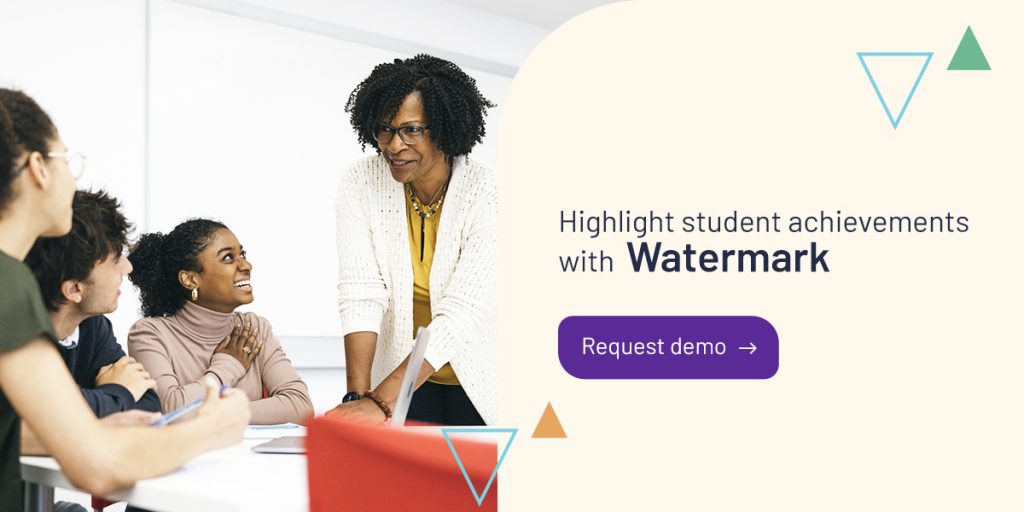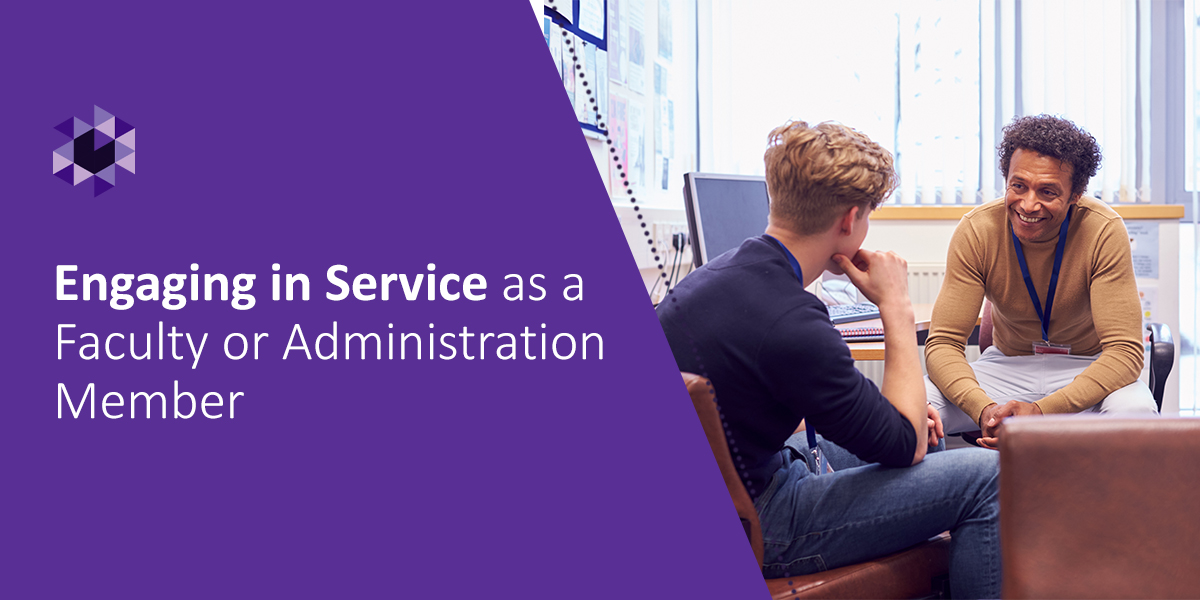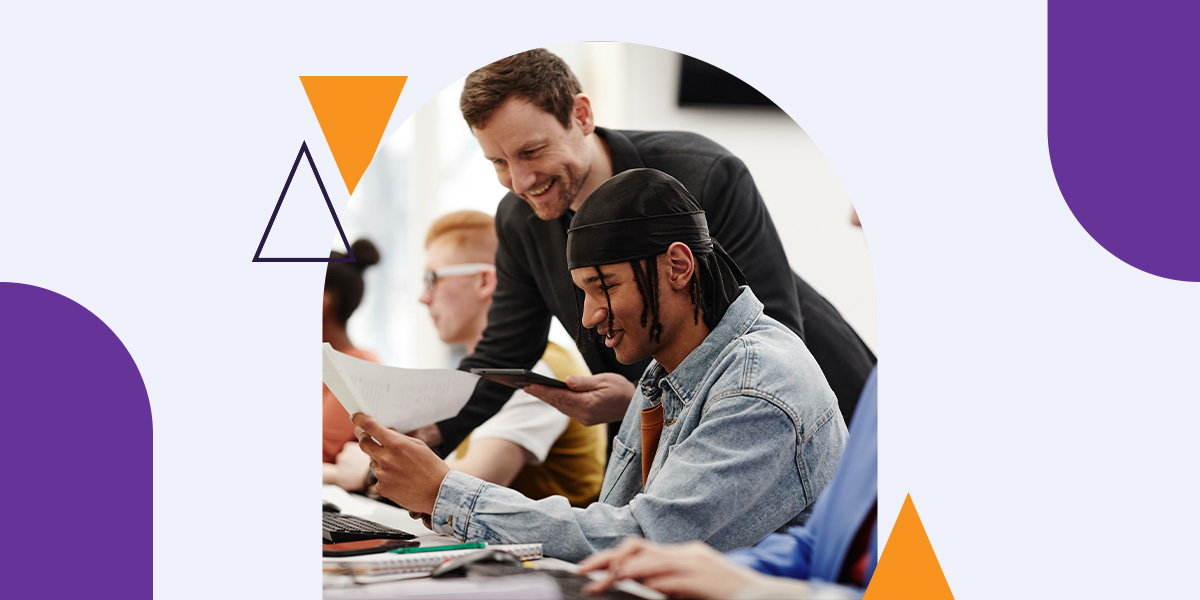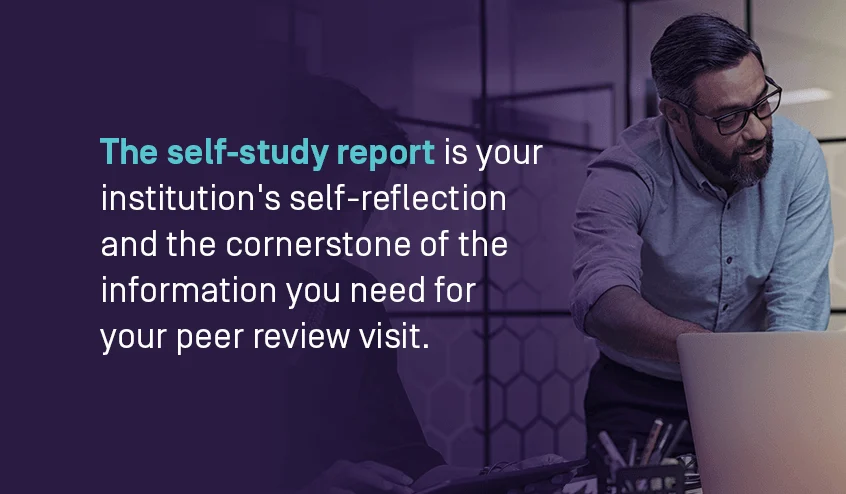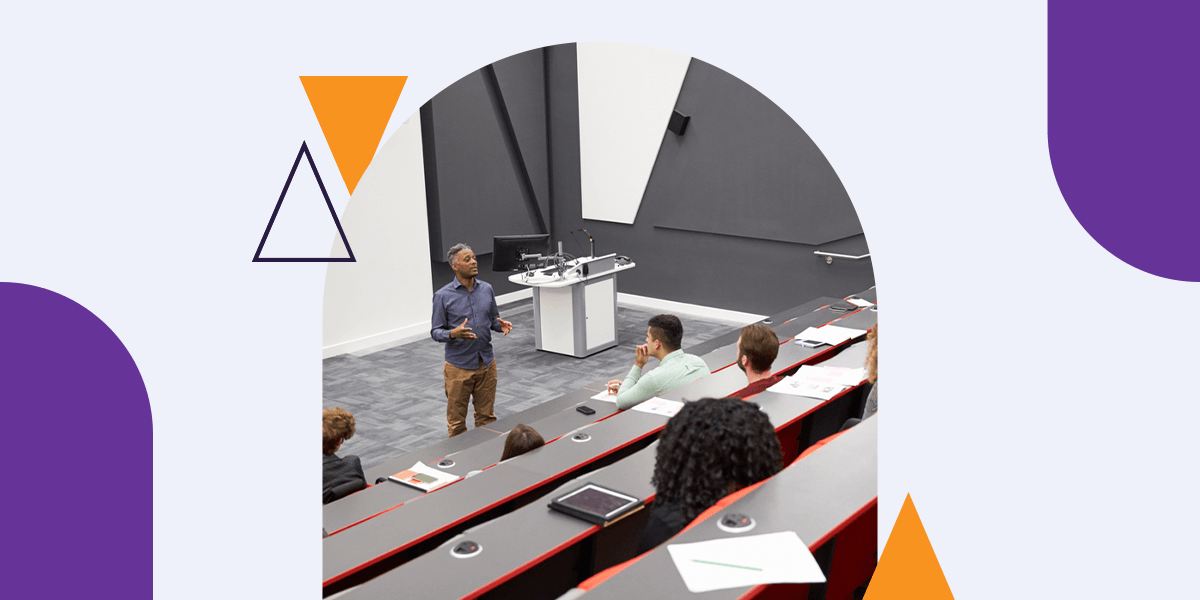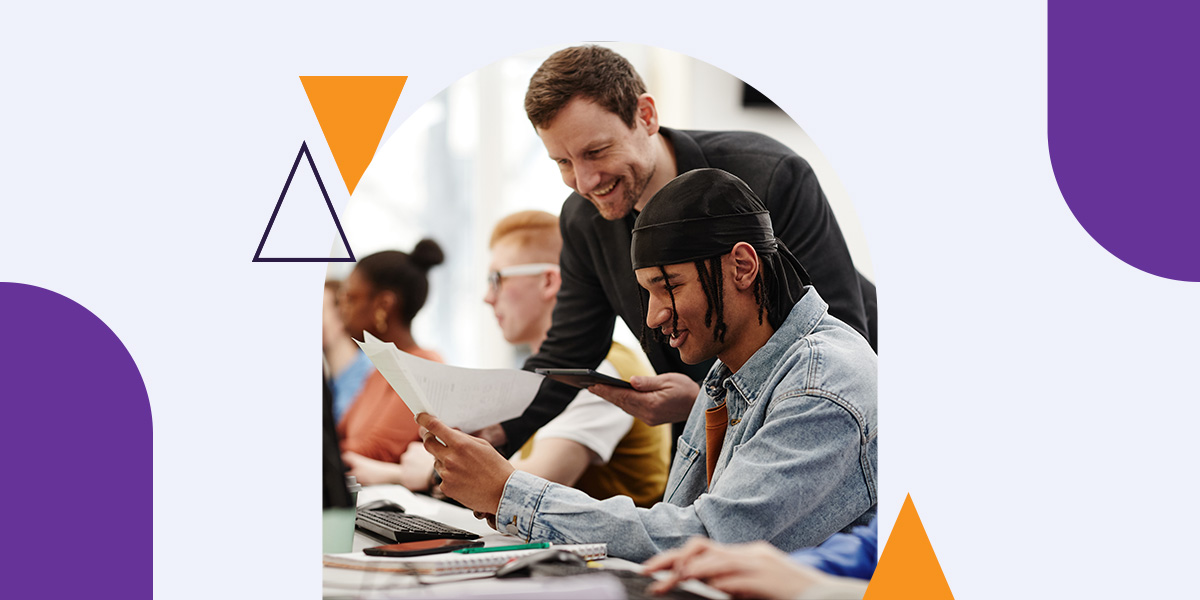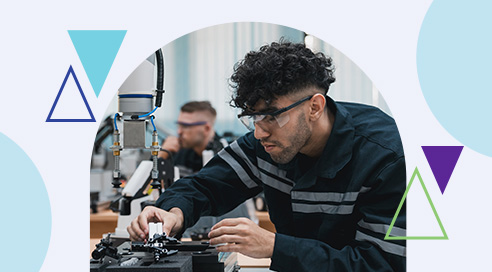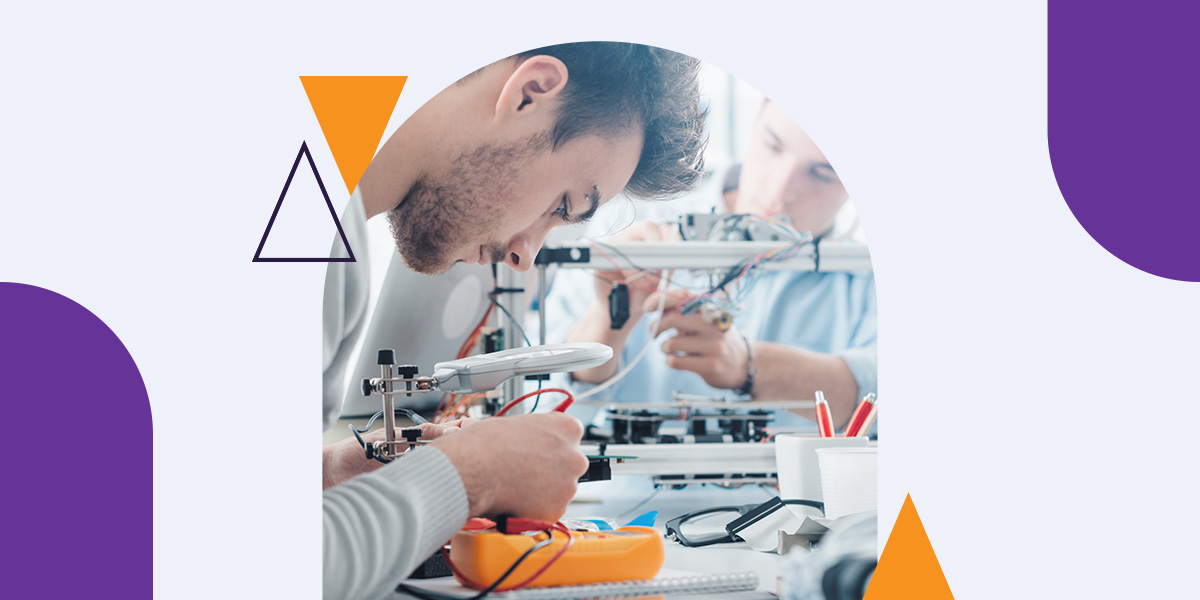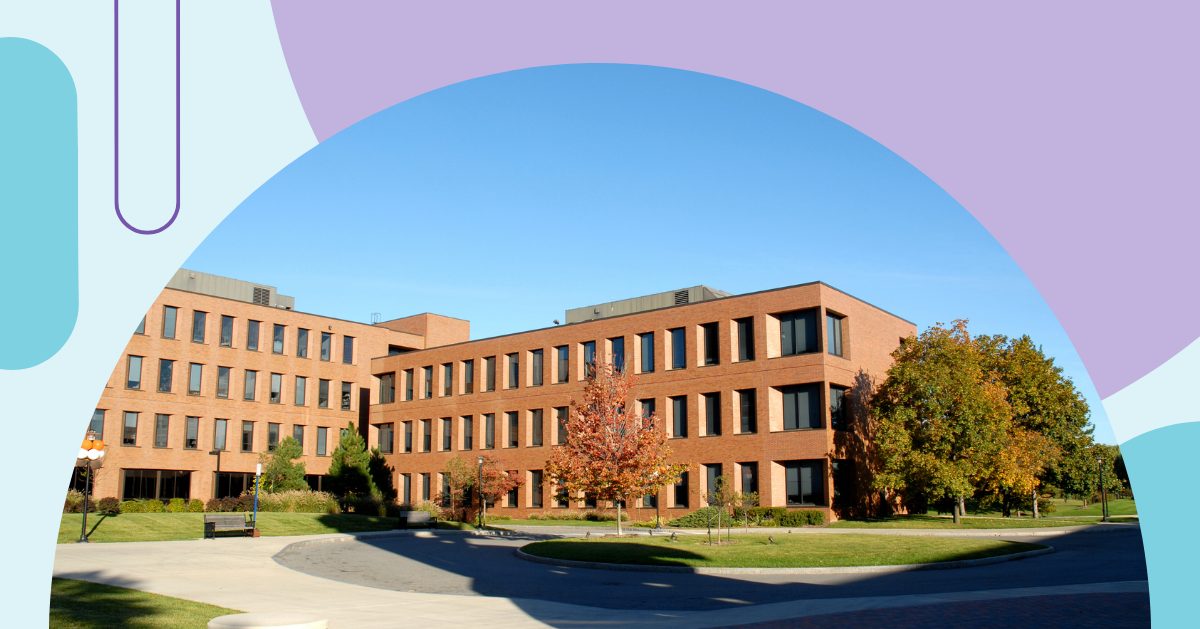
As political and economic pressure drives institutions toward a more skills-oriented, career-minded approach to higher education, traditional academic transcripts are giving way to next-generation technologies. These technologies allow students to collect digital credentials, including grades, certificates, degrees, work samples, and competency badges, in digital wallets and ePortfolios. A growing number of institutions are adopting digital credentialing, while others are unsure of the advantages.
This guide to digital credentials in higher education will explain how your institution and students can benefit from cutting-edge credentialing systems.
What are digital credentials?
Digital credentials are electronic records showing a student’s qualifications, competencies, experience, and achievements. They are the digital age’s answer to traditional paper certificates, diplomas, degrees, and transcripts. Digital credentials are stored on computers, mobile devices, or the cloud. They can be collected in ePortfolios or digital wallets, which are apps or tools students can use to collect and share their credentials. Types of digital credentials include:
- Digital diplomas and degrees: These are electronic documents, equivalent to paper diplomas and degrees, verifying that a student has completed a program and earned a qualification.
- Digital certificates: Like paper certificates, these recognize students for completing courses, professional qualifications, or training sessions.
- Microcredentials: These validate that a student has completed a module or unit within a course, or mastered a skill. Microcredentials carry merit on their own but can also stack together within an incremental learning framework to form certificates and degrees. Only 9 percent of institutions have a mature microcredential program, though interest is growing fast, making microcredentials valuable tools for institutional differentiation.
- Digital badges: These digital documents display achievements, including grades and competencies, often with different designs, shapes, or colors for different levels of accomplishment. Digital badges can apply to assessments inside the classroom as well as soft skills and learning outside the classroom.
Why is digital credentialing on the rise?
Digital credentialing is one way for institutions to stay competitive by meeting the demands of students and employers.
A recent study found that 60 percent of industry experts predict more employers shifting to skills-based hiring. This approach favors applicants who can demonstrate their ability to do what the job requires of them, placing less emphasis on their degree name or transcript. Digital credentials meet this need by validating a student’s competencies and knowledge. Digital microcredentials are especially valuable to nontraditional and working students, as they allow them to demonstrate skills to an employer without having to complete an entire degree or diploma first.
Institutions that have already adopted digital credentials put competitive pressure on others to implement them and avoid falling behind in enrollment or graduate placement rates.
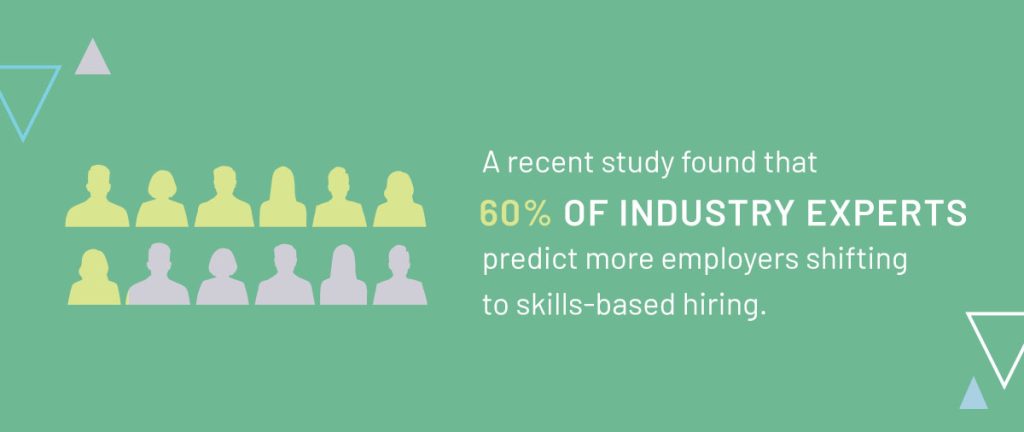
How digital credentials can benefit students
With digital credentials, the students are the primary winners, with downstream benefits flowing to their institutions and employers. The top benefits of digital credentials for students include:
- Employability: Digital credentials are a clear means of competency validation, helping students stand out and show employers that they have the skills to excel. One survey found that 96 percent of employers felt microcredentials strengthened a graduate’s application. Presenting microcredentials in digital form adds valuable context to a student’s qualifications, which is vital, as a student’s career readiness and suitability for a given role depend on fine-grained details beyond what a GPA can capture.
- Ownership: Where institutions control traditional transcripts, students can access their digital credentials at any time to check or share them. This helps students take ownership of their learning and career development.
- Motivation: Sustaining motivation and engagement from enrollment to graduation is challenging, especially in more difficult programs. Microcredentials and badges provide small, frequent rewards for accomplishments throughout a student’s academic journey. This creates a positive feedback loop, helping students stay focused and motivated. Awarding digital credentials for volunteering, internships, and professional development workshops can help foster a culture of lifelong learning.
- Personalization: Digital credentials encourage students and faculty to collaborate on personalized learning pathways, where the student takes charge of identifying and filling skills gaps en route to their goals. The result is a more engaging, relevant educational experience aligned with the student’s vision for their future.
- Equity: These credentials validate learning acquired on nontraditional timelines and outside conventional academic settings, helping students with diverse backgrounds and circumstances compete in the job market.
- Visibility: Badges and other digital credentials are easy to share on social media, attracting attention from potential employers and expanding networking opportunities with peers.
How digital credentials can benefit institutions
As the popularity of digital credentials grows, adopting them helps institutions stay competitive.
They can become an impactful marketing tool, gaining more exposure for your institution’s programs as students share their accomplishments. Prospective students, especially nontraditional students, will be impressed with the flexibility your credentialing approach offers and the potential boost to their employability once they start progressing at your institution. Recognizing the skills and achievements of students with some higher education but no degree contributes to a more inclusive learning environment while helping address skills shortages in the workforce.
Along with attracting new students, digital credentials can drive curriculum innovation to help retain current students and support them in pursuing their career goals. Microcredentials and badges lend themselves to personalized, adaptive, and practical learning pathways that meet diverse student needs and enhance institutional key performance indicators (KPIs).
In an era where upholding trust is essential for higher education institutions to survive, digital credentials promise authenticity. Blockchain and encryption technologies can secure digital credentials from threats of tampering and forgery that sometimes call the credibility of paper certificates into question. These sophisticated security possibilities help maintain trust between institutions, students, and employers.
Digital credentialing technologies also have a place in faculty professional development initiatives. These credentials encourage faculty engagement, reward continued education, and improve the objectivity of performance reviews.
Highlight student achievements with Watermark
Digital credentials can help your institution boost student motivation, reward progress, and enhance employability. However, maximizing these benefits takes a centralized space where each student can collect, review, and share their credentials. Give your students a user-friendly platform for telling their higher learning story with Watermark ePortfolios.
Watermark Student Learning & Licensure offers intuitive ePortfolios that students can use to collect their digital credentials, log field experiences, and market themselves to employers. Administrators can also draw from ePortfolios to quickly compile evidence for accreditation self-studies. Student Learning & Licensure integrates with Turnitin and all major learning management systems (LMS) for a seamless experience when importing credentials, grades, and work samples.
Request a free demo of Student Learning & Licensure today to see how ePortfolios can benefit your institution and propel your students to lasting success.
